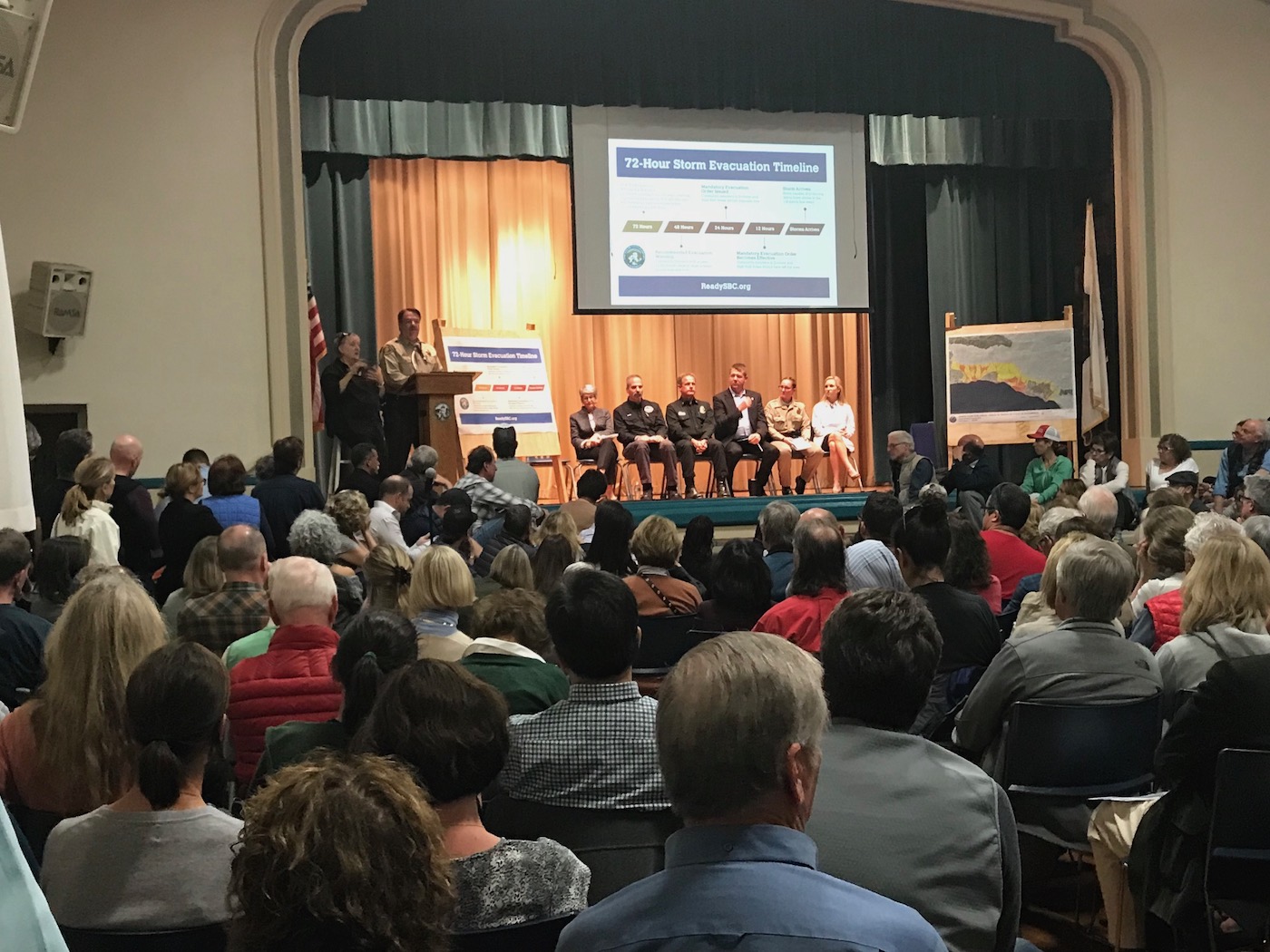New Evacuation Maps & Plans

Santa Barbara County Office of Emergency Management held both a press conference and a community meeting on February 8, to unveil a new interactive map and revised evacuation plans for future storms, nearly one month after 21 people were killed – two others remain missing – in the mud flow event of January 9. “This will be our new normal for the next few years,” said Santa Barbara County sheriff Bill Brown.
Referring to the January 9 mudslide catastrophe as the “1/9 debris flow,” emergency officials reiterated that the threat following the storm is not over, and that there is a heightened danger for those who live below the Thomas Fire burn area due to the damaged condition of the watershed. Experts say that as a result, it will now take less rainfall to move debris than it did during the 1/9 debris flow event.
A new map, available at www.readysbc.org (and shown on page 16), shows both high-risk and extreme-risk areas during rainstorms of 1/2-inch per hour or more; the map was developed by a group of engineers, scientists, and emergency officials. “Our evacuation plan has been refined since the 1/9 debris flow. Our goal is to clearly communicate to you what the risk to you and your family is,” said Montecito Fire Protection District Division chief Kevin Taylor. “Let us not be fooled that the mountains have flushed the debris from the 1/9 debris flow. The mountains and the canyons are still loaded with rocks, sediment, and other debris,” said Rob Lewin, Santa Barbara County Office of Emergency Management director. Residents are urged to find their properties on the map in order to assess their risk of mud flow in the future.
Officials announced three new evacuation terms: Pre-Evacuation Advisory, Recommended Evacuation Warning, and Mandatory Evacuation Order, to replace the formerly used “mandatory” and “voluntary” evacuation zones, and unveiled a timeline of evacuation plans to be used for storms, which is a different protocol than is used for wildland fires.
The 72-hour evacuation timeline calls for a Pre-Evacuation Advisory three days before a predicted storm. The advisory means that residents should be planning for potential evacuations. Forty-eight hours prior to the story, the County will issue a Recommended Evacuation Warning, which means that community members with access or functional needs or with large animals should evacuate. Twenty-four hours prior to the storm, a Mandatory Evacuation Order will be issued, which means community members in Extreme- and High-Risk areas should evacuate. By 12 hours prior to the storm, the Mandatory Evacuation Order will become effective, meaning that residents should no longer be in the area. “You still may be ordered to evacuate even if you aren’t near a watercourse,” said Sheriff Brown, explaining that it is likely that future evacuations will be necessary. “If you are at risk for loss of utilities, you will tie up limited first responder resources.”
Two hours prior to the storm, Highway 101 from the County line to Milpas Street will be closed, along with off-ramps in both directions, said CHP commander Cindy Pontes.
The new evacuation terms, the 72-hour timeline, and the interactive map have all been posted on the newly unveiled www.ReadySBC.org website. “We have to continue to get better and learn more from every disaster,” said Santa Barbara County First District supervisor Das Williams. “We want to prepare this community for the next event and for the continued cleanup.”





